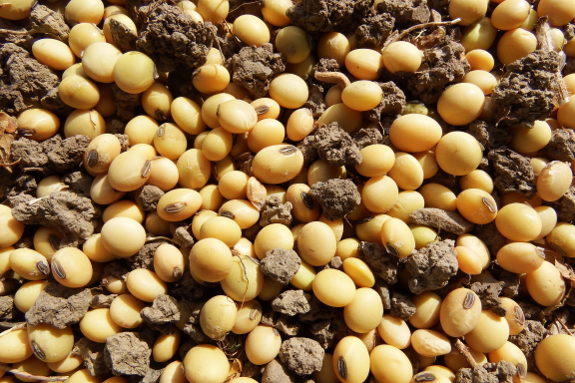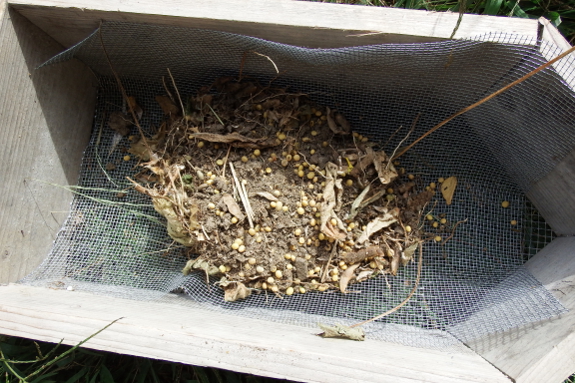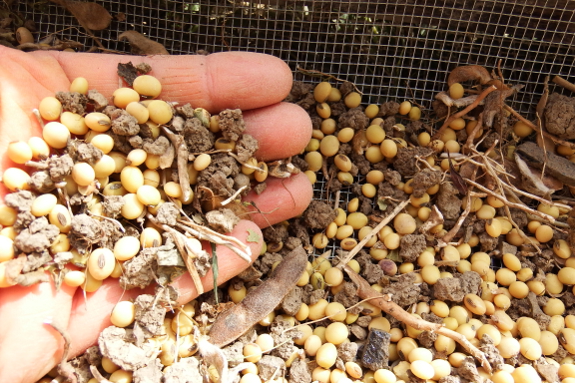
Threshing and winnowing soybeans

As Mark mentioned, we've
been harvesting some of our soybeans this fall. Since this is our first
year growing the crop (and since I'm primarily growing them for
soil-improvement purposes), my goal is pretty simple --- to end up with
as many seeds as I bought with minimal work. (Meaning I don't want to
shell the beans by hand and am willing to get much lower than maximum
yields as a result.)
But before I delve into my threshing experiments, I wanted to answer Susie's question
from this weekend. These are Viking 2265 soybeans from Johnny's, not an
heirloom but also not GMO. They're meant to be grown as a cover crop, but you could presumably eat the seeds. (Our dog and goats
sure like to.) If I lived in soybean country, though, I'd save my
pennies and buy the seeds at a feed store (although that source would be
much more likely to be GMO).
Okay, variety information
aside --- how did I separate my seeds from the plants and what would I
do differently next year? First, I yanked up plants once all the leaves
had fallen off and
piled the tops on a tarp on the porch. If I had this to do over again, I
would have cut the plants rather than yanked them --- the extra few
minutes at harvest would be worth it for the much lower dirt quotient in
the finished product. I also would have used a bigger tarp so the
plants could lie in one or two layers rather than in a mound since, even
though I harvested "dry" plants, some molded in the interior of the
pile due to our high humidity.

It took a week or two for
most of the soybean plants to start turning crinkly and dry. At that
point, I shod myself with close-toed shoes and did a little dance on top
of the plants as a rough-and-dirty threshing. Sure enough, quite a lot
of soybeans turned up on the tarp when I pulled the plants aside to peak
underneath.
I swept up soybeans, dirt, leaves, and all into a dust pan, then deposited the mass in my biochar sifter, retrofitted with a smaller screen that we'd bought for our honeybees.
I just pushed the new screen into the sifter on top of the old screen,
but it did its job --- preventing anything the size of a bean or larger
from falling through the holes. A bit of shaking, and the beans --- plus
dirt clods --- were separated from the smaller particles.

There are still quite a
few beans left in the plants on my tarp, so I'll do another round of
tromping and sifting once they dry a bit more. But I've already got
enough seeds for next year's planting, so I'll call the breaking even
part of this experiment a success. Looks like soybeans will be the first
of my cover crops that come full circle on the farm!
Want more in-depth information? Browse through our books.
Or explore more posts by date or by subject.
About us: Anna Hess and Mark Hamilton spent over a decade living self-sufficiently in the mountains of Virginia before moving north to start over from scratch in the foothills of Ohio. They've experimented with permaculture, no-till gardening, trailersteading, home-based microbusinesses and much more, writing about their adventures in both blogs and books.
Want to be notified when new comments are posted on this page? Click on the RSS button after you add a comment to subscribe to the comment feed, or simply check the box beside "email replies to me" while writing your comment.
